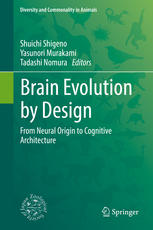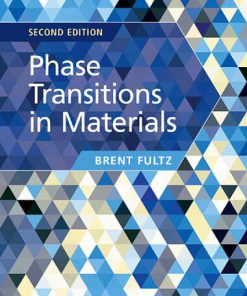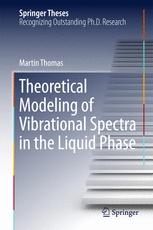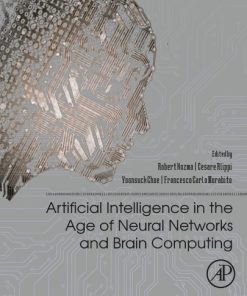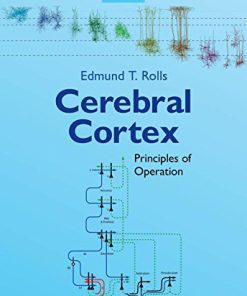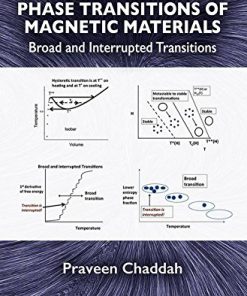Cognitive Phase Transitions in the Cerebral Cortex – Enhancing the Neuron Doctrine by Modeling Neural Fields 1st Edition by Robert 331924406X 9783319244068
$50.00 Original price was: $50.00.$25.00Current price is: $25.00.
Cognitive Phase Transitions in the Cerebral Cortex – Enhancing the Neuron Doctrine by Modeling Neural Fields 1st Edition by Robert Kozma – Ebook Instant Download/Delivery ISBN(s): 331924406X, 9783319244068
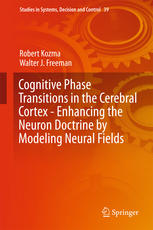
Product details:
- ISBN 10: 331924406X
- ISBN 13: 9783319244068
- Author: Robert
This intriguing book was born out of the many discussions the authors had in the past 10 years about the role of scale-free structure and dynamics in producing intelligent behavior in brains. The microscopic dynamics of neural networks is well described by the prevailing paradigm based in a narrow interpretation of the neuron doctrine. This book broadens the doctrine by incorporating the dynamics of neural fields, as first revealed by modeling with differential equations (K-sets). The book broadens that approach by application of random graph theory (neuropercolation). The book concludes with diverse commentaries that exemplify the wide range of mathematical/conceptual approaches to neural fields. This book is intended for researchers, postdocs, and graduate students, who see the limitations of network theory and seek a beachhead from which to embark on mesoscopic and macroscopic neurodynamics.
Table of contents:
Part I Review of Dynamical Brain Theoriesand Experiments
1 Introduction—On the Languages of Brains
1.1 Brains Are Not Computers
1.2 Symbolic Approaches to Brains
1.3 Connectionism
1.4 Brains as Transient Dynamical Systems
1.5 Random Graph Theory (RGT) for Brain Models
1.6 Neuropercolation Modeling Paradigm
References
2 Experimental Investigation of High-Resolution Spatio-Temporal Patterns
2.1 Method
2.1.1 Experiments with Rabbits
2.1.2 Human ECoG Experiments
2.1.3 Scalp EEG Design Considerations
2.2 Temporal Patterns: The Carrier Wave
2.3 Spatial Patterns of Amplitude Modulation (AM) and Phase Modulation (PM)
2.4 Classification of ECoG and EEG AM Patterns
2.5 Characterization of Synchronization-Desynchronization Transitions in the Cortex
2.6 Experimental Observation of Singularity
2.7 Transmission of Macroscopic Output by Microscopic Pulses
References
3 Interpretation of Experimental Results As Cortical Phase Transitions
3.1 Theoretical Approaches to Nonlinear Cortical Dynamics
3.2 Scales of Representation: Micro-, Meso-, and Macroscopic Levels
3.3 Cinematic Theory of Cortical Phase Transitions
3.4 Characterization of Phase Transitions
3.4.1 Critical State
3.4.2 Singular Dynamics
3.4.3 Symmetry Breaking
3.4.4 Transition Energy
3.4.5 Zero Order Parameter
3.4.6 Correlation Length Divergence
References
4 Short and Long Edges in Random Graphs for Neuropil Modeling
4.1 Motivation of Using Random Graph Theory for Modeling Cortical Processes
4.2 Glossary of Random Graph Terminology
4.3 Neuropercolation Basics
4.4 Critical Behavior in Neuropercolation with Mean-Field, Local, and Mixed Models
4.4.1 Mean-Field Approximation
4.4.2 Mixed Short and Long Connections
4.5 Finite Size Scaling Theory of Criticality in Brain Models
References
5 Critical Behavior in Hierarchical Neuropercolation Models of Cognition
5.1 Basic Principles of Hierarchical Brain Models
5.2 Narrow-Band Oscillations in Lattices with Inhibitory Feedback
5.3 Broad-Band Oscillations in Coupled Multiple Excitatory-Inhibitory Layers
5.4 Exponentially Expanding Graph Model
References
6 Modeling Cortical Phase Transitions Using Random Graph Theory
6.1 Describing Brain Networks in Terms of Graph Theory
6.1.1 Synchronization and the ‘Aha’ Moment
6.1.2 Practical Considerations on Synchrony
6.1.3 Results of Synchronization Measurements
6.2 Evolution of Critical Behavior in the Neuropil—a Hypothesis
6.3 Singularity and sudden transitions—Interpretation of Experimental Findings
References
7 Summary of Main Arguments
7.1 Brain Imaging Combining Structural and Functional MRI, EEG, MEG and Unit Recordings
7.2 Significance of RGT for Brain Modeling
7.2.1 Relevance to Brain Diseases
7.2.2 Neuropercolation as a Novel Mathematical Tool
7.3 Neuromorphic Nanoscale Hardware Platforms
References
Part II Supplementary Materials on BrainStructure and Dynamics
8 Supplement I: Mathematical Framework
8.1 ODE Implementation of Freeman K Sets
8.1.1 Foundations of Freeman K Sets
8.1.2 Hierarchy of Freeman K Sets
8.2 Finite-Size Scaling Theory for Random Graphs
References
9 Supplement II: Signal Processing Tools
9.1 Description of ECoG and EEG Signals
9.2 Hilbert Transform and Analytical Signal Concept for Pattern Analysis
9.2.1 Basic Concepts of Analytic Signals
9.2.2 Amplitude Modulation (AM) Patterns
9.2.3 Frequency Modulation (PM): Temporal Resolution of Frequency
References
10 Supplement III: Neuroanatomy Considerations
10.1 Structural Connectivities: Emergence of Neocortex from Allocortex
10.2 Constancy of Properties of Neocortex Across Species
10.3 Discussion of Scale-Free Structural and Functional Networks
References
Part IIICommentaries on NeuroscienceExperiments at Cell and Population Levels
11 Commentary by B. Baars
11.1 Introduction
11.1.1 Does the Cortex “know” or “intend”?
11.1.2 Cortical Intention Processing
11.1.3 Freeman Neurodynamics
11.2 Binocular Rivalry in Primates
11.3 Dynamic Global Workspace Theory
11.3.1 Direct Evidence for Cortical Binding and Broadcasting
11.4 Freeman Neurodynamics
11.5 An Integrative Hypothesis
11.5.1 Reference Notes
References
12 Commentary by Steven L. Bressler
12.1 Introduction
12.2 Neuron–Neuron Interactions
12.3 Population–Population Interactions
12.4 Discussion
References
13 Commentary by Zoltán Somogyvári and Péter Érdi
13.1 Modeling Population of Neurons: The Third Option
13.2 Mesoscopic Neurodynamics
13.2.1 Statistical Neurodynamics: Historical Remarks
13.3 Forward and Inverse Modeling of the Neuro-Electric Phenomena
13.3.1 Micro-Electric Imaging
13.3.2 Source Reconstruction on Single Neurons
13.3.3 Anatomical Area and Layer Determination: Micro-Electroanatomy
13.4 Conclusions
References
14 Commentary by Frank Ohl
14.1 Introduction
14.2 Traditional Conceptualizations of Auditory Cortex
14.3 Learning-Induced Plasticity in Auditory Cortex and Multisensory Processing
14.4 Towards Understanding the Neurodynamics Underlying Perception and Cognition
14.5 Exploiting Category Formation to Study the Neurodyamics Underlying the “Creation of Meaning’
14.6 Coexistence of Point-Like Topographic and Field-Like Holographic Representation of Information
14.7 Conclusion and Outlook
References
Part IV Commentaries on Differential Equationin Cortical Models
15 Commentary by James J. Wright
15.1 Introduction
15.2 Neural Mean-Field Equations
15.3 Stochastic Equations in ODE Form
15.4 Cortical-Subcortical Interactions
15.5 Pulse-Bursting and the Introduction of Stored Information
15.6 Synchrony as the Global Attractor
15.7 Stimulus-Feature-Linking, Phase Cones, Phase-Transitions, and Null-Spikes
15.8 Information Capacity—Synapses and Their Developmental Organization
15.9 Cortical Computation and Synchronous Fields
15.10 Self-Supervision of Learning
15.11 In Conclusion
References
16 Commentary by Hans Liljenström
16.1 Introduction
16.2 Cortical Network Models
16.2.1 Paleocortical Model
16.2.2 Neocortical Model
16.3 Simulation Results
16.3.1 Bottom-Up: Noise-Induced State Transitions
16.3.2 Top-Down: Network Modulation of Neural Activity
16.4 Discussion
References
17 Commentary by Ray Brown and Morris Hirsch
17.1 Introduction
17.2 Stretching and Folding Provide an Alternative Approach to the Laws of Physics for Modeling Dyna
17.3 Infinitesimal Diffeomorphisms First Originated from Integral Equations
17.4 Deriving IDEs for the KIII Model
17.4.1 The Linear ID Provides Fundamental Insights into the Dynamics of Stretching and Folding Syst
17.4.2 The Standard KIII Model Can Be Reformulated as a Set of Infinitesimal Diffeomorphisms (ID)
17.5 The Application of IDs to K-Neurodynamics May Result in Useful Simplifications of the ODEs Use
17.6 The KIII-ID Model Can Provide a Reduction in Computation as Well as Insights into the Neurody
17.7 The Wave Ψ(X) for Any K Model May Arise from Partial Differential Equations that Must Be Der
17.8 Summary
References
18 Commentary by Ray Brown on Real World Applications
18.1 Introduction
18.2 Implementation of the KIII Model
18.3 Selection of Mesoscopic Components
18.4 Example Results
18.5 Summary
References
Part VCommentaries on New Theoriesof Cortical Dynamics and Cognition
19 Commentary by Paul J. Werbos
19.1 Introduction
19.2 Top Down Versus Bottom up and the Neuron Dogma
19.3 An Approach to Explaining the 4–8 Hertz Abrupt Shifts in Cortex
19.4 Could Field Effects Be Important to Brain and Mind?
19.4.1 Associate Memory or Quantum Effects Inside the Neuron
19.4.2 Dendritic Field Processing
19.4.3 Quantum Fields and Quantum Mind
19.5 Summary and Conclusions
References
20 Commentary by Ichiro Tsuda
20.1 Self-organization and Field Theory
20.2 Differentiation by Variational Principle
References
21 Commentary by Kazuyuki Aihara and Timothée Leleu
21.1 Introduction
21.2 Propagation of Patterns in Modular Networks
References
22 Commentary by Giuseppe Vitiello
22.1 The Brain Is Not a Stupid Star
22.2 Far from the Equilibrium Systems
22.3 Conclusion
People also search:
cognitive transitions
cognitive phase of recovery
a cognitive process
a cognitive connection
agenesis of the corpus callosum cognitive deficits
You may also like…
Medicine
Brain Evolution by Design From Neural Origin to Cognitive Architecture 1st Edition Shuichi Shigeno
Chemistry
Theoretical Modeling of Vibrational Spectra in the Liquid Phase 1st Edition Martin Thomas (Auth.)
Medicine - Neuroscience
Cerebral Cortex: Principles of Operation 1st Edition Edmund T. Rolls
Science (General)
Phase Transitions in Foods 2nd Edition by Stephan Drusch, Yrjö H Roos 0124080867 9780124080867


